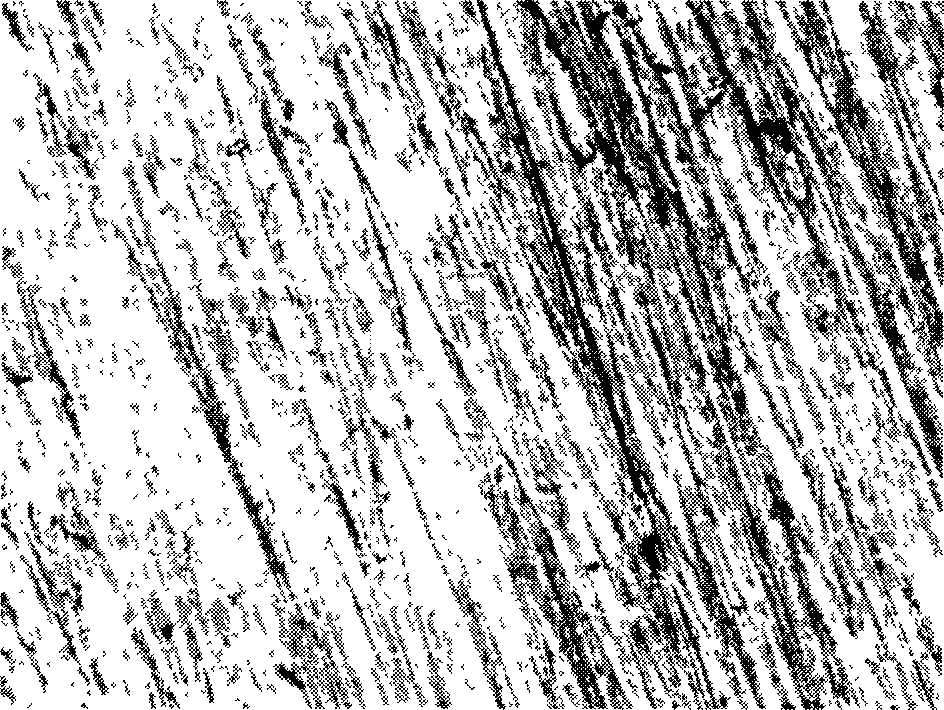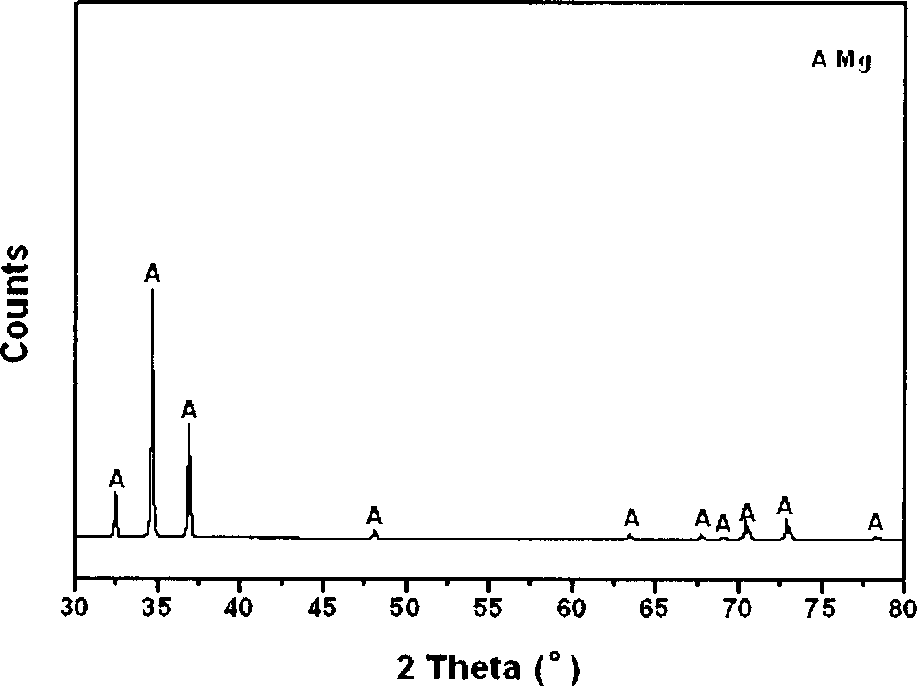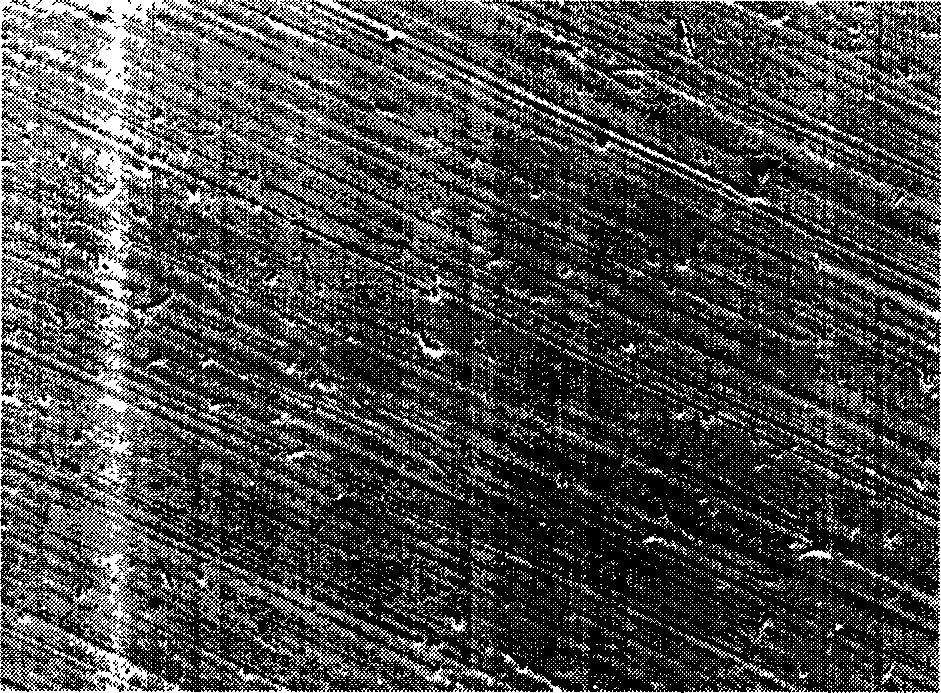Method for chemical plating of nickel-boron alloy on magnesium alloy surface
A surface chemistry, magnesium alloy technology, applied in liquid chemical plating, metal material coating process, coating and other directions, can solve the problems of high corrosion rate, increased cost of chemical plating, and inability to replenish nickel, and achieve good bonding force and Corrosion resistance, good practical application prospects, good deposition effect
- Summary
- Abstract
- Description
- Claims
- Application Information
AI Technical Summary
Problems solved by technology
Method used
Image
Examples
Embodiment 1
[0032]1) At room temperature, add sodium carbonate (15g), sodium phosphate (15g) and OP-10 (5mL) in sequence to deionized water (1L), heat up to 75°C after the dissolution is complete, and process it into 10mm×10mm×2mm AZ31B magnesium alloy samples of large and small sizes were placed in the alkaline cleaning solution and continuously stirred by ultrasonic waves, and were taken out after 15 minutes of treatment. At room temperature, put the treated AZ31B magnesium alloy into flowing deionized water for 2 minutes and take it out. The surface morphology of the treated samples is shown in figure 1 , the figure shows that a clean mechanically polished surface of AZ31B magnesium alloy is obtained after alkali washing.
[0033] 2) At room temperature, add 36% glacial acetic acid (40mL) and sodium nitrate (40g) in deionized water (1L) successively, put the AZ31B magnesium alloy after alkaline cleaning into the pickling solution and continue ultrasonic stirring to treat Take it out ...
Embodiment 2
[0049] 1) At room temperature, add sodium carbonate (20g), sodium phosphate (20g), OP-10 (10mL) in sequence to deionized water (1L), heat up to 60°C after the dissolution is complete, and put the AZ31B magnesium alloy sample into this Continue ultrasonic stirring in the alkaline cleaning solution, and take it out after 10 minutes of treatment. At room temperature, put the treated AZ31B magnesium alloy into flowing deionized water for 4 minutes and take it out.
[0050] 2) Pickling process is the same as in Example 1.
[0051] 3) At room temperature, add 40% hydrofluoric acid (240 mL) to deionized water (760 mL), put the AZ31B magnesium alloy treated above into the activation solution for 60 seconds, and then take it out. At room temperature, put the AZ31B magnesium alloy in flowing deionized water and wash it for 4 minutes before taking it out.
[0052] 3) At room temperature, add nickel acetate (38g) into deionized water (700mL) and wait for it to dissolve completely, then ...
Embodiment 3
[0064] 1) Alkaline cleaning process is the same as in Example 1.
[0065] 2) At room temperature, add 36% glacial acetic acid (35mL) and sodium nitrate (35g) to deionized water (1L) successively, put the treated AZ31B magnesium alloy into this solution and continue ultrasonic stirring, and take it out after 90s of treatment. Rinse with deionized water.
[0066] 3) The activation process is the same as in Example 1.
[0067] 3) At room temperature, add nickel acetate (40g) into deionized water (700mL) and wait until it is completely dissolved, then add ethylenediamine (55mL) while stirring, and add compound additives while stirring after cooling to room temperature, as follows: p-benzenesulfonate Sodium bicarbonate (8g), malonic acid (6g), sulfosalicylic acid (60mg), after the dissolution is complete, add sodium hydroxide (48g) under stirring, and after the dissolution is complete, add sodium borohydride (0.6g), Finally, add deionized water to 1L, heat to a constant temperatu...
PUM
 Login to View More
Login to View More Abstract
Description
Claims
Application Information
 Login to View More
Login to View More - R&D
- Intellectual Property
- Life Sciences
- Materials
- Tech Scout
- Unparalleled Data Quality
- Higher Quality Content
- 60% Fewer Hallucinations
Browse by: Latest US Patents, China's latest patents, Technical Efficacy Thesaurus, Application Domain, Technology Topic, Popular Technical Reports.
© 2025 PatSnap. All rights reserved.Legal|Privacy policy|Modern Slavery Act Transparency Statement|Sitemap|About US| Contact US: help@patsnap.com



